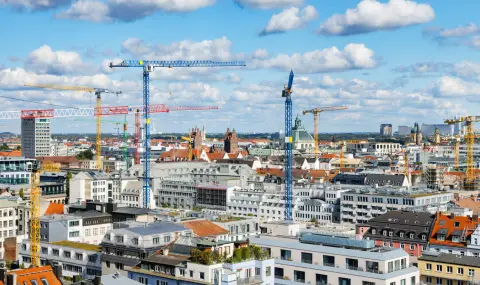In 2024, the volume of real estate investments in CEE reached 8.8 billion euros, representing an increase of about 70% year-on-year. Activity in the region has recovered, especially in Poland, the Czech Republic, Romania and Bulgaria, after bottoming out in 2023 and the first quarter of 2024, according to Colliers’ latest report “Investment Scene 2024 - 2025“.
“Central and Eastern Europe is making a strong comeback, with increasing real estate investment volumes and improving prospects for subsequent growth, against the backdrop of relatively weak activity in Europe. The largest increase in investments - more than twofold - was recorded in Poland. Upward developments were also registered in the Czech Republic, Bulgaria and Romania. This contrasts with several Western European markets, notably Germany, France and Spain, which have seen declines,” commented Grzegorz Silewicz, Head of Economic and Market Analysis, Colliers CEE.
„Colliers forecasts that average GDP growth in CEE economies will reach 2.9% in 2025, with Poland leading the way at 3.5% – significantly ahead of the 1.0% growth in the eurozone and the still struggling core economy, Germany. Central and Eastern Europe will remain on the investment radar, offering favorable opportunities and improving growth prospects.“
Strong economic fundamentals drive investment growth
„Investors have been quick to identify attractive opportunities amid an improving macroeconomic environment. Investment in retail space more than doubled, supported by recovering household consumption. Inflation fell to central banks’ targets by mid-2024, and unemployment remained historically low, supporting wage growth. Despite rising wages, sales growth lagged, and households prioritized savings due to favorable interest rates. Residential investment accelerated but remained a minor share of total flows as high prices in the segment made them less affordable. Central banks are expected to continue to cut interest rates, although non-euro area lenders will act cautiously, with Poland and Romania lagging behind in easing monetary policy,” explains Grzegorz.
2024-2025 Core Yield
In some markets, there is still a significant gap between buyers and sellers in terms of prices. Similar to Western European countries, following the price corrections recorded in CEE over the past 12-18 months, prime property yields stabilized in the second half of 2024 and no significant movements were recorded. In 2025 there may be minor changes, with more evidence of activity in prime markets emerging in CEE.
CEE Investment Volume Growth Rates (2024 vs. 2023 & 2022)
2024 volumes in CEE have recovered from the lows recorded in 2023 and early 2024 and continue to trend positively compared to activity over the past 12 months and to European and global results.
With almost 57%, Poland secured a majority share of regional volumes, with local activity noticeably increasing in the second half of the year. After sluggish activity last year, most markets recorded significant growth year-on-year. Across the region, the results recorded varied widely, from a 41% annual decline in activity in Hungary to a 138% annual growth in Poland. On average, volumes for CEE increased by 70% year-on-year, but decreased by 18% compared to 2022.
CEE Sector Flows
The share of transactions in the retail segment increased in 2024, the most notable development in most CEE markets, as consumer demand recovers. Retail transactions accounted for 32% of the total CEE volume, followed by offices at 30%. Demand for logistics and industrial properties decreased compared to previous years, with their share in 2024 being 23%. The largest deals in the region were in Poland in the retail space segment.
Flows in CEE by origin of buyer
Capital from CEE-6 is leading in 2024 with nearly 45% of the total volume of regional investments, while Czech capital dominates with 30%. European investors contributed with 28%, followed by the Middle East and Africa region with 16%.
Detailed statistics on average property prices in Bulgaria by cities and neighborhoods can be seen HERE
